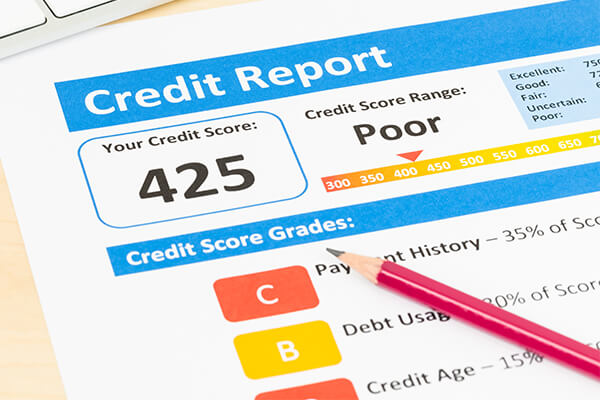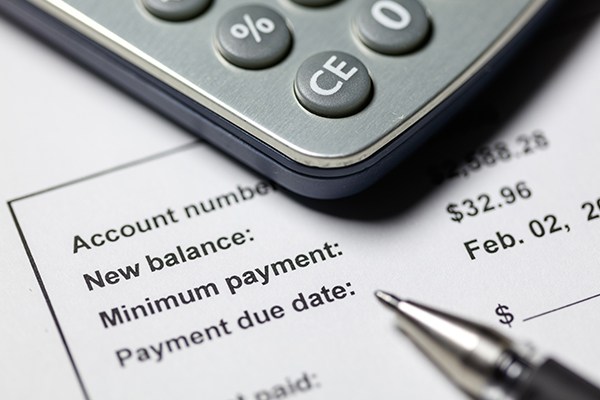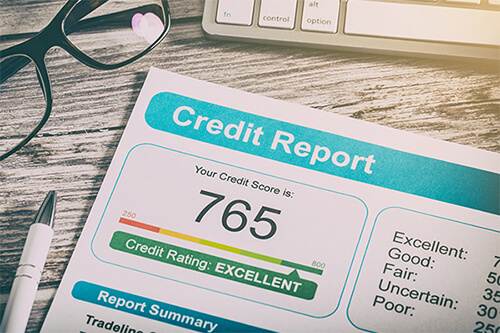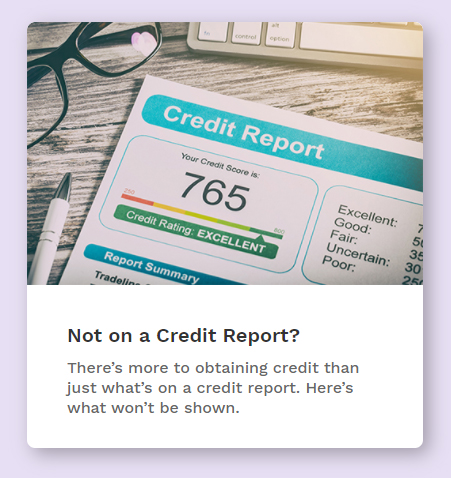Rebuild Credit in Canada – 5 Simple Steps
By Debra Pangestu
What’s Influencing Your Credit Scores?
Past money mistakes can have an impact on our credit score and hamper our chances of qualifying for a loan or getting a good interest rate; but the good news is, with some time and perseverance it is possible to rebuild your credit in Canada.
Most of us have harmed our credit history and score without even knowing it. If you’ve used over 50% of your credit card limit, made late payments, didn’t pay at least the minimum balance on your debts, or maxed out your credit, these seemingly inconsequential acts can have an adverse effect on your credit score.
There are different ways you can harm your credit history, but there just as many ways to salvage it, too. If you want to know how to rebuild your credit, here are five steps you can start taking.
5 Steps to Rebuild Credit in Canada
Step 1: Check Your Credit Report
The first step in repairing your credit is determining which areas need improvement, and getting a copy of your credit report is the best way to go about it. Do you have a lot of late or missed payments? Is your debt utilization too high? Or was there something more serious, like a bankruptcy? All of these factors can lower your credit score, and your credit report is where you can see where you went wrong. Once you’ve identified the reason behind your low credit score, you’ll be able in a better position to take action.
It’s also important that you check your credit report for any errors or fraudulent accounts, as these errors can bring your credit score down, too. If you discover an inaccuracy on your credit report, bring it to the attention to the creditor so they can remedy the problem and revise what they are reporting.
You’re entitled to a free copy of your credit report from each of the credit bureaus – Equifax and TransUnion – once a year. Each credit bureau may have different information about your credit history on file, so it’s a good idea to get a copy of your report from both agencies.
For more information on credit reports, visit the Financial Consumer Agency of Canada’s Credit Report and score basics page
Step 2: Make Arrangements to Bring Your Accounts Up To Date and Pay Down Debts
Your payment history is the largest factor affecting your credit score, so if you’ve been behind on your payments – or haven’t been making your payments on time – your credit situation likely won’t improve much unless you get your accounts up to date.
If you’re in a tough spot and you can’t afford to bring your delinquent accounts up to date at once, contact your creditors to see if you can negotiate a payment arrangement that works with your budget. If you and your creditors aren’t able to work out an arrangement, an accredited, non-profit credit counsellor may be able to help you create a plan to bring your accounts up to date, and pay down your debt.
In addition to getting your accounts up to date, paying down your debts is also a key part of rebuilding credit. The amount of debt you have owing in relation to the available credit you have – known as credit utilization – is the second most important factor in your credit score. Let’s say your available credit limit is $10,000 and you’re using $7,500. Your credit utilization is at 75%.
If you are using a good chunk of your available credit, it can have a negative impact on your credit score. So it’s important to pay down as much of your debt as you can. Ideally, you want to try to get your credit utilization down to under 50%. 35% or less is the very best though. For every debt you pay down, your credit utilization will decrease, which will help with your overall credit. If you use more than 75% of a credit card, line of credit, or overdraft, this will have a significant negative impact on your credit score until the balance is paid down.
Related: How Your Credit Score is Calculated
Step 3: Rebuild Credit with a Secured Credit Card
Once you’ve developed a plan to tackle your debts and get your payments up to date, the next step is to build a consistent payment history. An important part of building credit is demonstrating that you can pay back the money you borrowed and prove to creditors that you can responsibly manage debt. Use the optional filters in this FCAC Credit Card Comparison Tool to find secured credit card options in Canada.
A secured credit card functions like any other unsecured credit card, in that you’ll have access to credit and your payment information will get reported to the credit bureau each month. But unlike other credit cards, you will need to provide a security deposit as a form of collateral before you can use the card. The amounts can range anywhere from $100 to $500 or more. This deposit assures creditors that you will indeed pay back the money you borrow.
When you use your secured credit card to make a purchase, those purchases are not deducted from your security deposit. Instead, you’ll be expected to repay that amount to the credit card company, as you would with a regular unsecured credit card. How you use your secured credit card will affect your credit score as it conveys to your creditors whether you can handle credit responsibly, so it’s important to make mindful, essential purchases you know you can pay off.
After six months to a year of making steady payments and staying within your balance, you can ask if your secured credit card can be “upgraded” to an unsecured card. Using credit cards to rebuild your credit is a great tool to use, however it’s important to keep in mind that having any sort of credit card isn’t an excuse to “free up” more money so you can buy things you can’t realistically afford.
Step 4: Make At Least the Minimum Payment By the Due Date
How to Improve Your Credit Score
As you work towards building your credit history, it’s critical that you make your payments on time, and this goes for non-credit bills as well. A missed utility payment that is way past due, an outstanding cell phone bill, or old parking tickets can get reported to the credit bureaus, so it’s important that you start establishing a reliable payment history by paying at least the minimum payment on all your bills by the due date. At the very least, you want to avoid missing payments or constantly making late payments.
To ensure you consistently make your payments on time, set up reminders, either on your desktop computer, on your phone, or even on a calendar. If you aren’t able to pay your balance off in full every month, make at least the minimum payment on each of your debts by the due date. Late payments and missed payments will count against you, and it will negatively impact your credit score and your credit report.
Another thing that could help is setting up automatic bill payments so that each of your bills are paid automatically each month. This way you’ll never miss a payment, and you won’t have to pay for stamps, envelopes, cheques, and trips to your bank. Automatic payments can be for a set amount each month or they can be just for the minimum payment.
There are, however, two potential drawbacks to automatic payments. You need to make sure the money is in your account when the automatic payment is scheduled to take place. If you’ve setup the automatic payment yourself on internet banking, nothing will happen if there isn’t enough money in your account and you’ll miss the payment. If the bank or someone else has setup the payment, it could overdraw your account if you don’t have enough funds on hand and result in an expensive NSF fee. However, if you have a line of credit on your account that’s not maxed out, this shouldn’t be a problem.
Step 5: Adopt Good Financial Habits
Developing smart spending and saving habits are crucial to rebuilding your credit score, and one of the best ways to do this is to create a budget that accurately reflects how much you earn and how much you spend. With a budget you’ll know how to live within your means, and you’ll be able to manage your money better.
A budget, essentially, is a spending plan for your money. By giving every dollar a job, you’ll be able to determine in advance whether you’ll have enough money to cover all your expenses. And if you don’t have enough money to cover your expenses, you can use your budget to prioritize your spend and focus your money on areas that are most important to you. This free budget calculator spreadsheet is a great tool to help you start building a realistic budget.
Once you’ve developed a budget, it’s time to get into the habit of setting up money reminders. Create a checklist of all your bill payments and note all your payment dates, either in an agenda, a wall calendar, a smartphone app, or a Google Calendar notification. Whichever method you decide to use, it will serve the same function: it’ll help you remember where your money needs to go and when, so you’ll never make a late payment.
Another good financial habit to adopt is learning how to live frugally. Living frugally is more than just pinching pennies and depriving yourself of things that bring you joy, just so you could save a few dollars. Instead, it’s about making mindful choices so you’ll be able comfortably live within your means. By living within your means, you’ll be able to pay off your debt and rebuild your credit faster so you can enjoy the small – and big – joys in life. Here are some frugal living habits you can start incorporating into your day-to-day living.
Stick with these good financial habits, and it’ll be much easier for you to reach – and maintain – your new and better credit history.
Rebuilding Credit Takes Time and Patience
Having bad credit can limit us in more than one way. For example, we may not qualify for loans, and if we do qualify we may have to settle for a higher interest rate or less-favorable terms. Poor credit can also result in higher insurance premiums, and in some cases, missing out on a job opportunity or a nice place to rent because an employer or a landlord did a credit check before making their decision.
The bad news is that there are no quick fixes to rebuild credit in Canada. But the good news is that rebuilding your credit – even rebuilding credit after bankruptcy – can be done, with some time, patience and financial discipline. If you follow the five steps outlined here, you can expect to see an improvement in your credit score and credit history in several months to a year. It may be difficult to get started, but once you develop momentum and you start to see the progress you’ve made, you’ll coast your way to a better credit score.
If you want to get more information on how to rebuild credit, you can make a free appointment to meet with one of our accredited, non-profit Credit Counsellors. They’ll help you go through your finances, set up a budget, and lay out all your options so you can get your finances back on track.
Last Updated on June 6, 2025
Frequently Asked Questions
What is the fastest way to rebuild your credit?
The only and fastest way to rebuild your credit is by paying off any outstanding debt. Also, disputing any error on your credit report and responsibility for spending your credit.
How do I improve bad credit?
Your credit score depends on your payment history, credit utilisation ratio, credit history, credit enquiries, etc. If you have bad credit, ensure timely payment of your bills and keep your credit utilisation low.
How long does it take to rebuild credit?
It takes plenty of time to rebuild credit, and it is not an easy process and depends on factors like how bad the situation is, as each person has different credit problems.
How To Get A 700 Credit Score In 90 Days?
Getting a credit score of 700 in 90 days is very much possible, although it might seem difficult. You need to pay any outstanding debts you have, along with dispute any errors on your credit.









I am a widow because my husband who was a professional engineer who passed unexpectedally .You could say I went from riches to rags and my sons took everything and refuse to help their own mother
We’re sorry to hear that Judy. If you’d like to talk to someone, please feel free to give us a call at 1-888-527-8999. We’d be happy to answer any questions you have regarding your credit or financial situation.
Hello, So I have about 4000$ debt atm been like this for a good couple years, and now I have a job, Not the best hours but I can eventually pay ot off soon in small amounts, But after I pay it all back, How do i go from bad credit to decent credit, Would I need to see my bank and see if I can get a limited credit card?
Yes, your first step is to make a plan to pay the debt back. If you need help with that, feel free to give us a call. We’re always happy to help (and our help is free). To rebuild your credit, you need at least one positive thing reporting to the credit bureaus. A credit card with a small limit would do the trick. That would show that you have credit available to you, and you’re using it responsibly as agreed. If there is negative information on your credit report such as late payments, it will take longer to improve your score, but in time, as you demonstrate your responsible use of credit, your score will improve. If your bank won’t give you a credit card, there are reputable companies online that can give you a cash secured card. With these, they hold a certain amount of money as security for your credit limit.
This actually answered my problem, thank you!
Like others you have answered pretty much every question I had about the process.
Is it best to have a secured card with say a $500 limit but only use a small portion of the limit every month ($100) and pay it off when the statement is issued In order to repair my credit fastest?
To help your credit, yes, only using a small portion of your total credit limit will help. However, doing this isn’t going to “repair” your credit. It’s only going to contribute towards you getting the highest score possible at the present time, but other factors can still hold your credit score back. If late payments or other negative information is being reported on your credit report, that will always have a negative effect on your score and generally hold it back until it expires (usually after 6 years). In the meantime, though, doing everything you can to improve your score such as only using a portion of your credit limit will help. You should also know that you don’t need to use a credit card each month for it to help your score. The credit scoring algorithms only care that a credit card is active. So using it once every 6 months or so should easy keep it active.
where do you find all the credit cards that are active under your name. I feel we might have some open cards we don’t even remember … I know … ridiculous but true
Hi Britta, To find out what credit cards are active under your name all you need to do is to obtain a copy of your credit reports. If you’re in Canada, you’ll need to get a copy of your credit report from Equifax and your credit report from TransUnion. These credit reports will often contain the same information, but sometimes they are different. So it’s best to check both of them. You can find more information about getting your credit reports here: https://www.mymoneycoach.ca/credit/check-credit-rating-report-score
Woh I enjoy your blog posts, saved to fav!
Appreciate you sharing, great blog. Really looking forward to read more.
Wow, great blog article. Really looking forward to read more. Really Great.
Enjoyed every bit of your blog post. Really thank you! Awesome.
This can be an inspiration to many people. Very good job